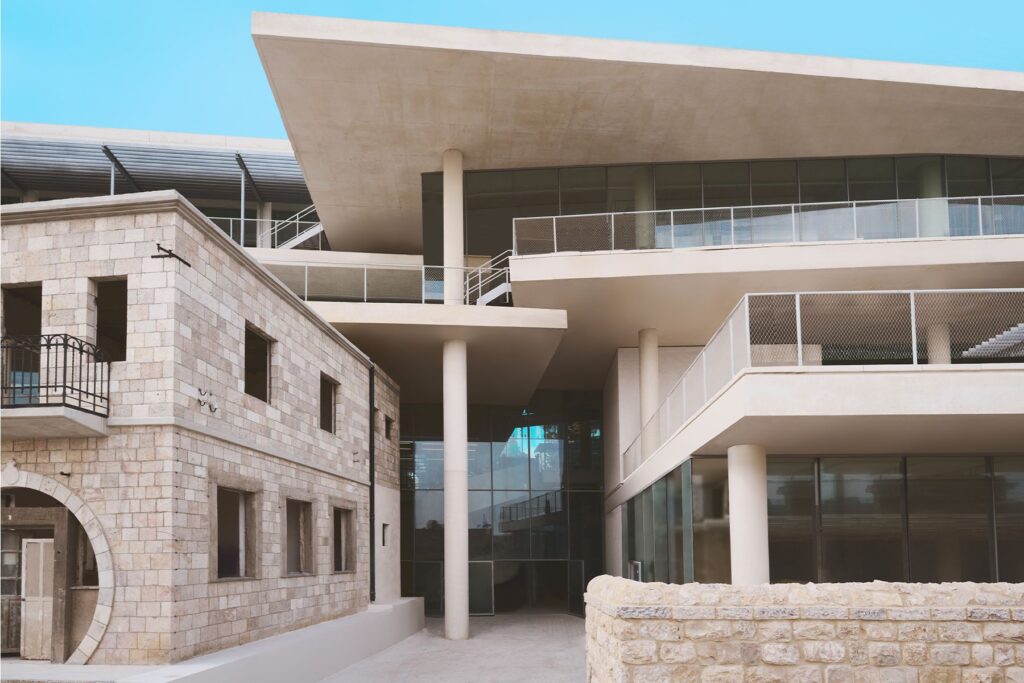
A campus by SANAA and HQ Architects that will breathe new life in Jerusalem’s historic Bezalel Academy of Arts and Design, established in 1906, and will provide a state-of-the-art educational complex and a creative hub for the city, catering to approximately 2,500 students and 500 faculty members.
The site of the new campus for Bezalel Academy of Arts and Design is located on the top of a hill next to the Russian Compound, overlooking the old city of Jerusalem. The Academy is made up of nine departments, each with studios, classrooms, and workshops. The building also houses the administration offices and public areas such as galleries, a store, and a cafeteria.


To promote interaction and communication between departments, the programs are placed on slabs stacked in a staggered manner. From each slab, students can see the other departments and activities above, below, and across in hopes of inspiring multidisciplinary projects, new ideas, and friendships.
An ample room is reserved around each program to allow natural light to enter from above and the sides, filtering into even the most central part of the building. Once a year, these open spaces are filled with student works to showcase their achievements to the visitors.



Project Details:
Name: Bezalel Academy of Arts and Design
Location: Jerusalem, Israel
Status: Completed (2023)
Area: 42,000 sqm
Typology: Educational
Design Firm: SANAA and HQ Architects
Photographs: ©Noam Debel, ©Dor Kedmi






